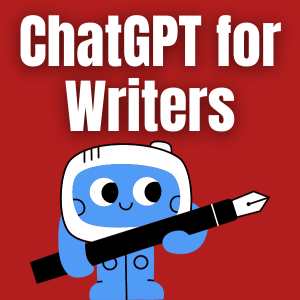Using ChatGPT to write SEO-friendly blog posts involves a strategic approach to content creation. Here’s a guide on how to leverage ChatGPT for SEO blog posts:
Keyword Research:
Begin by conducting thorough keyword research to identify relevant and high-ranking keywords for your topic. Use tools like Google Keyword Planner or other SEO tools to discover search terms your audience is likely to use.
Define Clear Objectives:
Clearly outline the objectives of your blog post. Understand the target audience, the problem you’re solving, or the information you’re providing. This clarity helps guide your interaction with ChatGPT.
Generate Headlines:
Ask ChatGPT to generate multiple headline options for your blog post. Ensure that the headlines are compelling, include your primary keyword, and encourage clicks.
Introduction Crafting:
Use ChatGPT to help craft an engaging introduction. It should provide a hook, introduce the main topic, and include your primary keyword naturally.
Topic Expansion:
Provide ChatGPT with key points or subheadings related to your blog post. Ask the model to expand on these topics, ensuring that the content is informative, relevant, and aligned with your target keywords.
Incorporate Long-Tail Keywords:
Include long-tail keywords naturally within the content. Ask ChatGPT to provide variations of your primary keyword and integrate them where appropriate.
Ensure Readability:
Request ChatGPT to optimize the readability of your content. It should be easy to understand for a wide audience. Use shorter sentences, paragraphs, and subheadings for clarity.
Meta Description Creation:
Generate meta description options using ChatGPT. It should be concise, and compelling, and include your primary keyword to encourage clicks from search engine results pages.
Internal and External Linking:
Ask ChatGPT to suggest relevant internal and external links for your blog post. Internal links improve navigation, and external links add credibility. Ensure they are contextually relevant.
FAQ Section:
Utilize ChatGPT to create a Frequently Asked Questions (FAQ) section. Answer common queries related to your topic to enhance the user experience and potentially earn featured snippets.
Conclusion Summarization:
Request a concise summary for your conclusion. Recap key points, restate the importance of the topic, and encourage readers to take action if applicable.
CTA (Call-to-Action):
Have ChatGPT suggest a compelling call to action. Whether it’s subscribing, sharing, or exploring related content, guide readers on what to do next.
Optimize for Mobile:
Ask ChatGPT to provide tips on optimizing your content for mobile users. Ensure that the blog post is responsive and offers a seamless experience on various devices.
SEO-Friendly Images:
If applicable, ask ChatGPT to suggest alt text for images. Alt text helps search engines understand the content of images, contributing to better SEO.
Editing and Proofreading:
Before publishing, carefully edit and proofread the content generated by ChatGPT. Correct any grammatical errors, refine language, and ensure a polished final product.
ChatGPT prompts for SEO blog post writing
Primary Keyword Integration:
“Craft an introduction paragraph for a blog post about [insert primary keyword]. Highlight its importance and tease what the article will cover.”
Subheading Expansion:
“Expand on the subheading ‘Why [insert keyword] Matters.’ Provide insights, benefits, and real-world examples that emphasize the significance of the keyword.”
Competitor Analysis:
“Analyze how competitors are addressing [insert keyword] in their blog posts. Identify gaps or areas where our content can provide additional value.”
Addressing User Intent:
“Write a section that addresses the user’s intent behind searching for information on [insert keyword]. Offer solutions, tips, or expert advice.”
Long-Form Content Introduction:
“Create an introduction for a long-form blog post on [insert keyword] with a word count of 1500+. Make it engaging and outline what readers can expect.”
Local SEO Optimization:
“Write a paragraph about optimizing content for local SEO, specifically focusing on [insert local keyword]. Include tips for businesses to enhance local visibility.”
Featured Snippet Content:
“Craft content that aims to earn a featured snippet for the query ‘[insert question related to the keyword].’ Provide a concise and direct answer.”
Semantic SEO Expansion:
“Expand on the concept of semantic SEO in the context of [insert keyword]. How can content be optimized for related terms and phrases to improve search visibility?”
Keyword Variation Integration:
“Integrate keyword variations naturally in a section discussing different aspects of [insert keyword]. Ensure coherence and readability.”
Visual Content Description:
“Describe how visual content, such as images and infographics, can enhance the SEO of a blog post about [insert keyword].”
Internal Linking Strategies:
“Explain effective strategies for internal linking within a blog post about [insert keyword]. How can it improve user experience and SEO?”
Backlink Building Content:
“Craft a paragraph on the importance of building backlinks for SEO in the context of [insert keyword]. Provide actionable tips for obtaining quality backlinks.”
SEO Trends Discussion:
“Write about current SEO trends related to [insert keyword]. Discuss how staying updated with trends can positively impact search engine rankings.”
Social Media Integration Impact:
“Explain how integrating social media into content can positively impact the SEO of a blog post about [insert keyword]. Provide examples and best practices.”
Mobile SEO Best Practices:
“Offer insights into best practices for optimizing blog content for mobile SEO, specifically focusing on [insert keyword].”
E-A-T Concept Exploration:
“Explore the E-A-T concept (Expertise, Authoritativeness, Trustworthiness) in the context of a blog post about [insert keyword]. How can it improve SEO?”
User Engagement Strategies:
“Write about strategies to enhance user engagement on a blog post related to [insert keyword]. Discuss the role of comments, shares, and dwell time.”
Voice Search Optimization:
“Provide tips and insights on optimizing content for voice search in the context of [insert keyword]. How does it differ from traditional SEO practices?”
Updating Evergreen Content:
“Discuss the importance of regularly updating evergreen content related to [insert keyword]. How does it contribute to sustained SEO performance?”
Local Business SEO Tips:
“Compile a list of actionable SEO tips for local businesses targeting [insert local keyword]. Address on-page, off-page, and technical SEO aspects.”
Feel free to adapt these ChatGPT prompts based on your specific topic, industry, and the unique aspects of the content you want to create.
Remember that while using ChatGPT for SEO copywriting, it’s important to review and refine the output to align with your brand voice and style. Regularly update your blog with fresh, relevant content to maintain and improve your SEO rankings over time.
SEO writing tips & tools
- Complete Google SEO & Copywriting with ChatGPT Course
- Free Surfer SEO Writing Masterclass
- Free SEO Classes To Become SEO Certified
- SEO Copywriting Certification Course
- Best AI Writing Courses for Writing AI Content
- Best AI Content Generator Tools For Writing AI Content
- 21 SEO Tips For Blogs: Bloggers SEO For Beginners Checklist
- Best SEO Content Writing Tools to Write SEO-Friendly Articles
- How to Use AI SEO and Machine Learning in SEO Automation
How to Use ChatGPT for Writers



